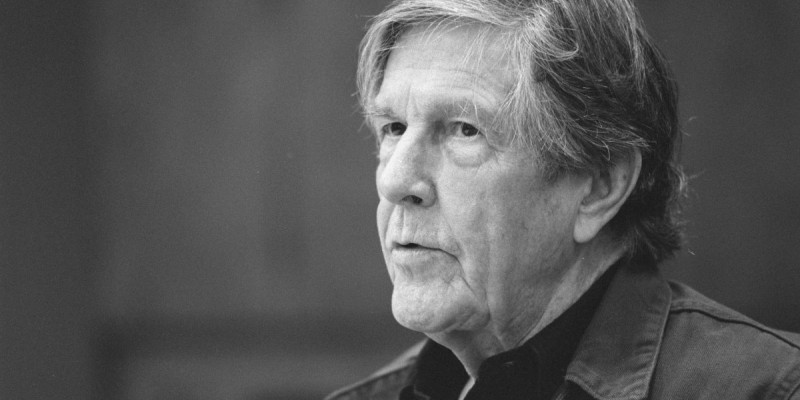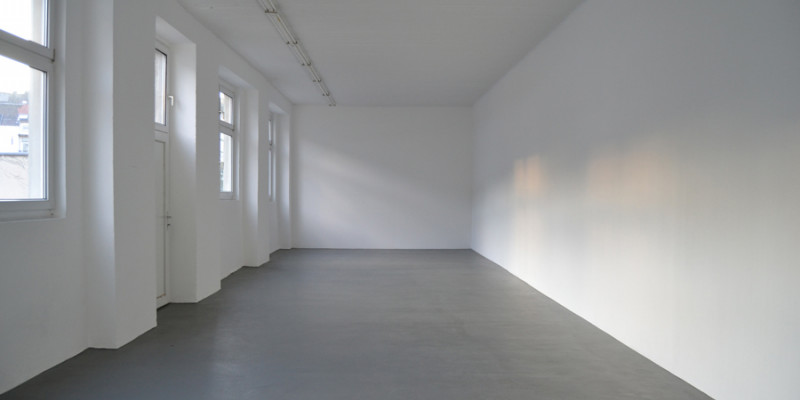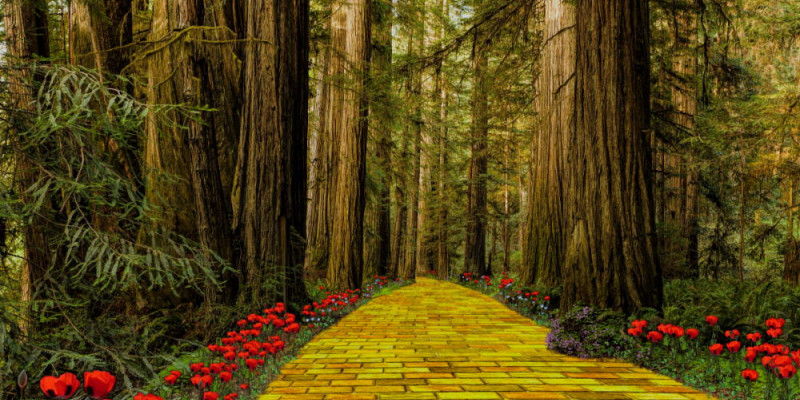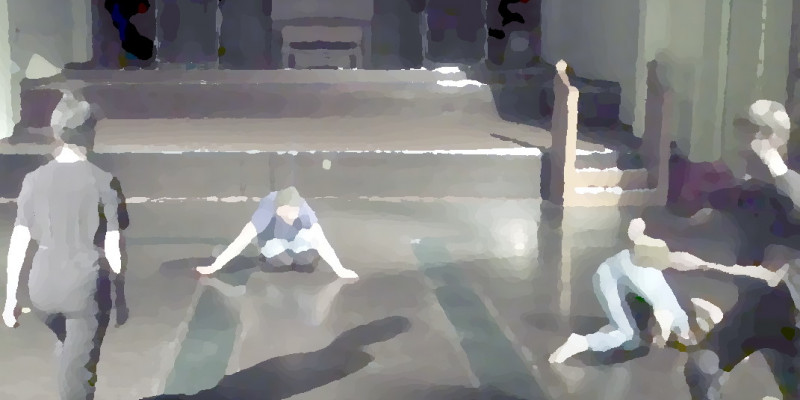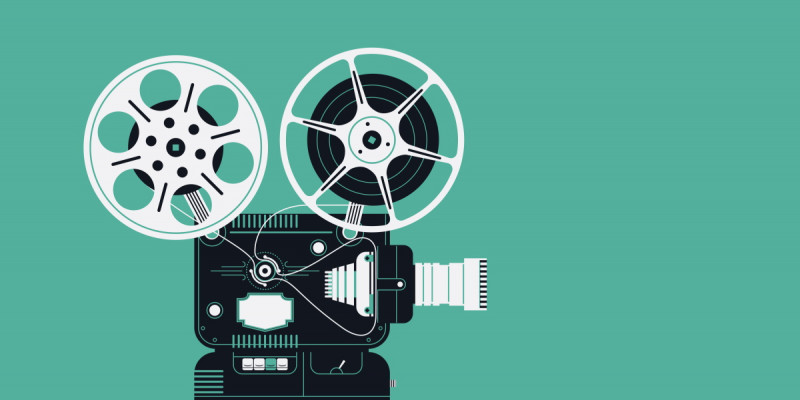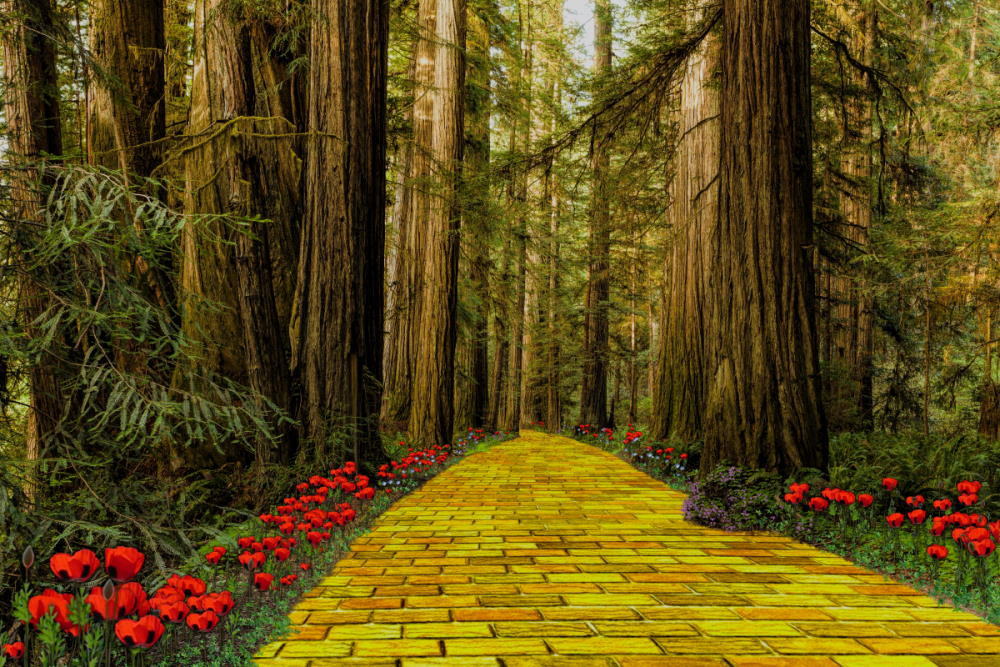
Beyond the media reveal
Abstract
The ‘media reveal’ is a perspective and gesture of art and media making, theory and writing. It is a staging of continuous surprises – reveals – that denature and remove myth and illusion from media, often highlighting materiality or materialist function.
In this essay, derived from a keynote lecture given at the 2019 RE:SOUND Media Arts Histories conference in Aalborg, Denmark, I attempt to characterise the media reveal narrative as it appears in media art, along with the stories media artists tell themselves through critical theory and thinking. Does this gesture expose or depose the always present power structures and technocratic didacticism that often remain? If we sought to go beyond the media reveal, what new practices of knowledge should emerge?
Opening addresses
The following essay is derived from a lecture given in August 2019 as a keynote for the RE:SOUND Media Arts Histories conference in Aalborg, Denmark. At the invitation of conference chairs Morten Søndergaard and Laura Beloff, I had the honour of opening the event’s deliberations – which took place just before the start of a new academic year, in the early hours of the first day of the conference and in front of a group of people I respect, admire, and have now known for many, many years.
The bulk of what I said in Aalborg was a kind of midsummer improvisation, for which I would issue Kurt Vonnegut’s warning delivered at the start of his own lectures: “Keep your hat on. We may wind up miles from here” (Vonnegut 2012). Relevant to the topic at hand – gestures of revelation – Vonnegut’s cautionary preamble, which he gave to the audiences of his own lectures, was the fabled punchline of his favourite (dirty) joke, a joke he never revealed to anyone. For this published version of what was a rather roaming talk, I have tried to forge something of a contiguous path through the notes with which I stepped out in front of the crowd in Aalborg.
Amongst other things, the summery invitation extended by Morten and Laura seemed an opportunity to express my thanks for – and to – a community of collaborators, thinkers, idea-sharers and project-makers. The group in attendance in Aalborg was one I have been lucky to become involved with over quite a number of years – reminding of the importance to be grateful for our own, personal, media art histories.
The gratitude which arose in me was perhaps also spurred on as the summer we were then concluding had been a strange and destabilising one. A number of developments, geopolitical and otherwise, had befallen us all, and myself personally. Various kinds of geographic shifts, changing and expanding collaborative teams, and new institutional initiatives transform lives, in particular around this time of year as we find ourselves on the cusp of early Autumnal seasons and semesters.
During all this, the communities and collectivities undergoing these changes were also suffering from a deeply felt shock – the untimely, startling, and tragic death of a dear friend, thinker, artist, designer, and collaborator, Sascha Pohflepp. Sascha left this life at the young age of 41 on 17 June 2019 (incidentally, three days before my own birthday). He was a bright, glowing light of a human being and a joining figure in a lot of the communities I have been lucky enough to be a part of. The 2019 RE:SOUND conference in Aalborg was just the kind of thing where I would have expected to run into Sascha Pohflepp. We’d grab a drink, have a chuckle, and probably make a little speculative plan or two. I miss him, and I missed him being there in August 2019.
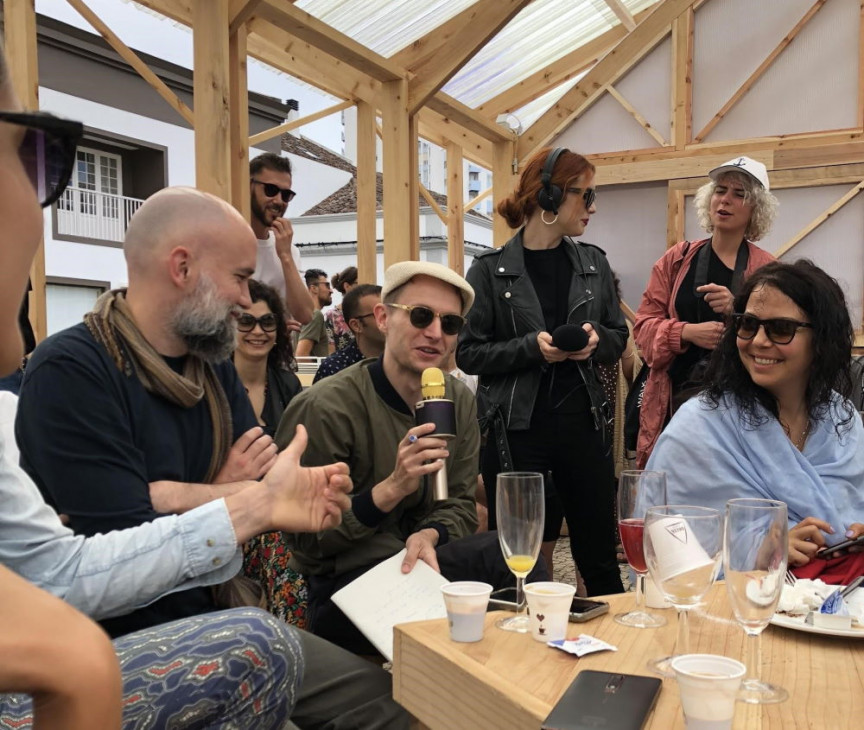
It seemed quite a natural, if not necessary, thing to speak Sascha’s name on that bright, crisp Danish morning and bring his own trans-mediality and reverberations into the room, as both memory and imaginary, so recently after his passing. In acknowledging how much his personality and way of being continue to inform thinking, feeling and imagining for the communities he was part of and held together, we can also acknowledge that his presence was, more often than not, always itinerant, mediated and ephemeral, most often on the move.
He was a person who understood and energised the importance of the arts and technologies of critical curiosity and media scepticism, but who was able to maintain an inspiring spirit and imaginative levity. Sascha had, dare we say, a positive outlook on life that was truly creative (both terms that almost seem radical to use in earnest these days). Sascha Pohflepp was sensitively and positively curious in ways that I will always admire and be inspired by.
A key-note I hoped to hit with my address was one of appreciation of all those who inspire and conspire with us, living and otherwise. An appreciation of all those who choose to give their patience and generosity to one another, in care and collaboration, toiling toward the creation of new histories of media and its arts. I am so very grateful for the conversations and exchanges of ideas, energies, techniques, curiosities and dreams that form the excuse for beautiful friendships and relationships, collaborative activities, and creations. These are the interactions that allow for, and constitute, any ‘I’ that stands before any group of ‘we' during such a lecture. “No shows are ever solo”, as I am also fond of repeating.
Revealing the “behind the scenes” attentions and care – attempting to move beyond the surface of things into what is “really going on” – provides a segue to another theme of this lecture: the mode of critical media projects and a perspective on studies thereof. This is something I’ve come to call “the media reveal”. It is a phrase that has helped me name some self-reflective concerns I have about patterns in my own work, in my own thinking, and in my collaborations. It is a perhaps useful descriptor for some of the critical-creative reflexes I myself tend toward, and is also a manner in which materialist strands of media art, theory, and practices have become reified in the past ten years or so.
Constitutive of what many have acknowledged in the social sciences and humanities as the “infrastructural turn” (Amin 2014, p. 1), we could mark this turn with the onset of philosophies and interests in (speculative) materialism (e.g.: Shaviro 2014; Bennett 2010) re-emerging in the early 2000s after a period of over-the-top cybernetic fervour about the possibility of consciousnesses, decision making, and politics dissolving into machines (which it seems people somehow wilfully forgot for a while are also material objects).
I have been largely preoccupied with how framing media as conceptual and material infrastructures can reframe and intervene in material political and ecological crises and notions of planetary management. No matter what political or practical powers we give over to technologies and media, there is a need to continually guard against over-conscripting things to solely functional or materialist causality, or even the philosophical or technocratic ‘mansplaining’ which befell parts of the aforementioned intellectual moments and movements (Behar 2016). We have a choice between the myths we make and take up, and we can choose which particular imaginaries we pay attention to and elaborate, but there’s no getting away from it. As Pleasure Activism: The Politics of Feeling Good author adrienne maree brown (who prefers not to capitalise her name) reminds us, “what we pay attention to, grows” (brown 2019, p. 16).
The imaginaries we choose are like little ‘votes’ for particular kinds of worlds that we are forever building inside our heads and then building in the actual world. If we presume our materialist scopes and critical scalpels to be able to engineer-out ‘illusory’ magic and power, we more easily forget how fundamental illusion, artifice, and even misapprehension are to how media work and how they compel, motivate, fascinate, and interest scholars, artists, and publics. Myth and narrative, story and mystery are part of what drives and motivates – part of what keeps us all from getting cynical, bored, or dispirited in the face of base-pragmantism or dismal prognosis. They also help us to not turn our attention away from harder stories and those destructive imaginaries that create real issues that press down upon us all, and upon the planet.
When we do not address those qualities of media that are reserved for imaginary realms – mythic, spectral, everyday, and even enchanted qualities – we run the risk of denaturing media, its study and art practices, along with their communities. Insightful reveals can be clever and self-satisfying, incisive cynicisms, that keep our work from attachments to extra-art, extra-academic concerns, feelings, agendas, and communities. This can be quite destabilising, I think, and it has contributed to a lot of people feeling that they do not understand what our contemporary arts of media and technology can do, or who they are doing this for.
We, as critical media practitioners and thinkers, have undone many false promises, made attempts at all kinds of radical transparency, deconstructed and described things down to their base componentry. But these kinds of deconstructions are neither complete, nor completely ‘true’, because as we can forever remind ourselves through the words of Ursula K. Le Guin, truth is itself “a matter of the imagination” (Le Guin 2012, p. 8).
How do we reimagine what media art can do, and whom it does this for and to? Can we, who involve ourselves in the arts and study of media, sometimes get stuck in this mode of thought and action I have come to call “the reveal”? Might we ask what alternatives exist to these kinds of ‘reveals’ and what new imaginaries and awarenesses might be most important for us to energise ourselves toward? Could one such alternative be in the reinvigoration or re-exploration of the ways that enchantment, vulnerability, non-irony, and even obscurity are deployed in our arts and critiques of media and technology?
Revelation!
Montaigne wrote: “Astonishment is the foundation of all philosophy; inquiry the way it advances; and ignorance its goal” (Montaigne 2009, p. 1,030). Our revelatory drive, if we were to start to sketch its characteristics, seems to come in part from strands of materialist and naturalist philosophies of affective access. “The real” is composed, sought out, and talked about as something we desire for affective and subjective encounters with. We speak of and reach out for material force and intimacy, to touch and be touched in composed fields of raw, cold, signaletic asignification. The reveal also incorporates a drive toward empirical methods, valuing practices of quote-unquote ‘direct’ ‘engagement’. This, almost always these days, involves appeals and practices of some mode of ‘fieldwork’, and methods more and less explicitly or purposefully derived from field-disciplines like ethnography, anthropology, archaeology, and geology.
As Shannon Mattern has pointed out, these are also problematic “rites of passage”, wrapped up in colonialist and gendered ways of being as well as a “macho culture of surviving and suffering” for one’s own research, one’s own art (Mattern 2016, n.p.). Media data and documents are ‘brought back’, extracted, from hostile terrains as the spoils that allow us to stake claims to new discoveries and experiences from which we fashion new totems of institutional value (e.g. books) and tokens of professional accolade (e.g. exhibitions).
The reveal is also a helpful mode of “disrobing the emperor,” in our minds as practitioners and in popular imaginations. It is incredibly important and impactful to understand things like the geological source materiality of media devices, the effect of specific algorithms on human behaviour and the logistics of markets, and the surveillance networks of online behaviour and engagement. A revelatory, confidential, often journalistic mode of critical media-making does much to proliferate this kind of network-knowing and constructively makes the point that all of our media imaginaries are made possible by energies, materialities, geopolitics, and labour from which they are abstracted and extracted from.
We can and should be ever more aware of this cast of dependencies, these scenographies of materials, people, systems, and histories. It is essential that we acknowledge these dependencies as conditions of who we are and can be, and further affirm social and ecological interdependencies, such that our conceptions of self or selves as creators extend beyond individual self-interest, self-referentiality, or satisfaction and outside the worlds of art and academia. There will be times when we should even overemphasise these tracings of material interrelation, overblowing their importance and interest, as a kind of “strategic essentialism”, as George E. Lewis said of the early political actionist ideologies of black music improvisation (Lewis 2007, n.p.).
Just as we continue to enact sensitive reveals, we must also figure out ways to move beyond these revelatory gestures. If we understand part of our role to deconstruct and disrobe, we must also take up the responsibility to set into place important new myths, new imaginaries. New stories that expand and link or attempt to construct alliances and build alternatives, be they material, systematic, technological, or again, imaginary. Otherwise, all kinds of strange forces – global warming deniers, or post-truthers, for example – have full opportunity to rush in and put Humpty Dumpty back together again, in whatever way they might like.
Beyond the reveal, we might find ourselves in a position of responsibility not only to remove illusion, map agencies, question mythology, and dispel unfounded belief, but also to create new such agencies, new representations, invitations, motivations, and communities that explore outside the interiority of art, literature, science, and philosophy – infusing these with renewed intention and motivation in times during which these are sorely needed.
What energies and relevances can be recovered in media art, study, and research that are generative of the presence and attention needed to make good things grow? What will allow more inspiration and less incredulity to thrive in these practices of art and academics, institutionally and extra-institutionally? What will allow new voices and perspectives to be heard? If we are indeed, as Siegfried Zielinski has proposed, in an era that is “After the Media…” (Zielinski 2015) – in the sense of these arts we engage in having any kind of sensory, motivational, or political force – what are the next turns we should make?
Given current environmental and humanitarian crises, we should consider how human activity through media helps to re-imagine and re-engineer always changing planetary systems. As once supposedly predictable systems are pushed into states of novel, precarious instability, it becomes increasingly clear how little we control or understand. Just as we come to deeply feel the effects of human populations on ecologies all over the globe, in order to mitigate them we must also develop means of living within ever-changing environments. The earth is far ahead of us, and yet the constructivist and holistic drive of some techno-sciences – often including technological art – makes the earth itself into an object of manipulation, a medium for mass collective self-expression.
This is a condition that begs for renewed imaginaries that give us the image of a grounded earthly condition, attached and dependent. We need new, always ambiguous and unstable, media practices that grapple with laterality and the obtuse, distorted, and un-interpolatable depictions of an incalculable planet. We are not the kybernetes (steersmen) that elliptical cybernetic media-sciences continue to imagine us to be. If we are able to listen well and harmonize at all with ‘nature’, it is as things also embedded in it – not above or outside it, neither ‘steering’ or ‘stewarding’. Productive knowledge practices in art, media, research, and the everyday should ground and attach us to our co-inhabitant beings, beings that each contain multitudes and which can never be entirely ‘revealed’.
Critical proximities?[1]
The ‘critical project’ of art and academia – if we can still name such a thing for all the steam it has run out of (Latour, 2004) – embodies positions of perspective, geography, class, and status that are most often detached and distanced. Problems of knowledge and critique are continually organized around the philosophical theme of proximity. Amongst the criteria of objectivity are that we get away from what we observe. For example: must we get out of, or off of, Earth in order to properly observe it? Do we need to see it as a whole and get the necessary distance that we suppose gives a clearer view? Such abstractions – contradictory scenographies of knowledge – proceed unabated and show up everywhere. We are also quite close to those people we know, those with whom we feel most comfortable and open with.
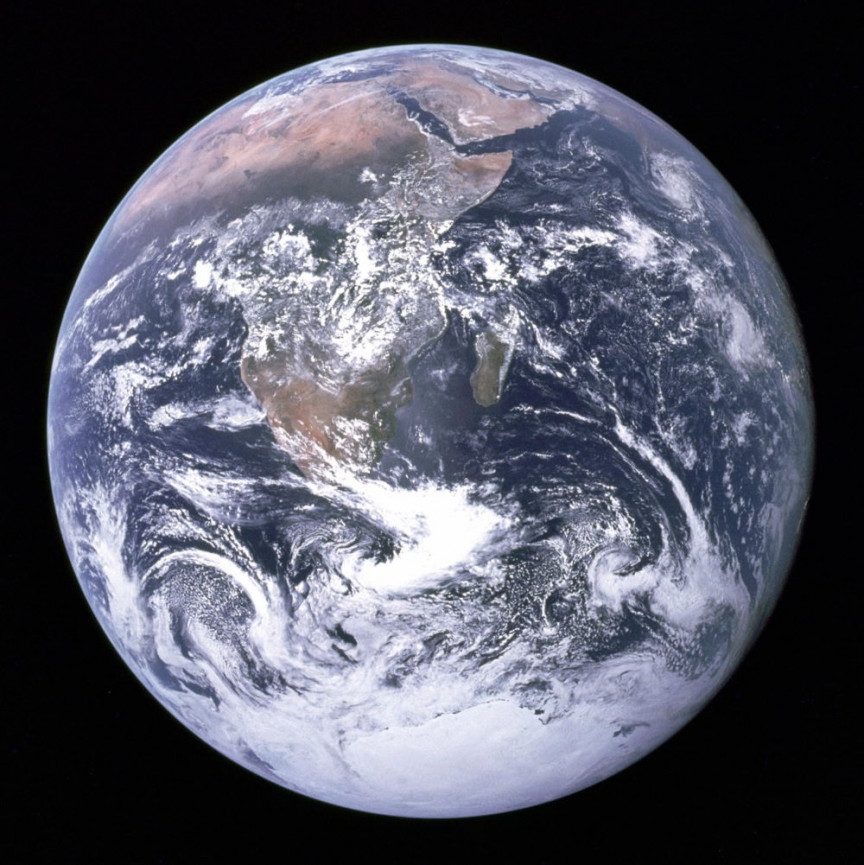
Frederick Neyrat names this desire for distance also in his idea of the “unlocatability of the concept” in science, philosophy. and art. He writes:
Philosophy would not have been possible without an out-of-place, that un-attributable dimension with which it is sometimes too strongly identified. Philosophy is, however, not the only thing to suffer from this identification, this adhesion to nowhere: All cultural emanations – literature, science, religion – phenomenalize atopia to different degrees. All creation, singular or collective, draws on the possibility of constituting an artistic or theoretical interiority in the outside. (Neyrat 2017, p. 60)
This is also perhaps why everyone seems so interested in the idea of ‘worlding’ – the conceptual infrastructures and environments that design, science, art and media construct. It is also why we can reasonably talk about ‘the Art World’, for example. It is indeed a ‘world’ outside of ‘the world’. In a similar vein, Lorraine Daston and Peter Gallison in their wonderful book Objectivity identify the modernist aspiration that “knowledge that bears no trace of the knower – knowledge unmarked by prejudice or skill, fantasy or judgment, wishing or striving. It is objectivity as blind sight, seeing without inference, interpretation, or intelligence” (Daston & Galison 2007, p. 50).
Once such an objective knower is composed and ensconced in his Northern European atopia, partaking and part of the genealogy of the male gaze, critique can pull off some of its most productive and most violent “reveals”. The construction of scientific fact and the bifurcation of nature are just two examples of reveals that much current media art, scholarship and cultural production are made as a corrective to.
And yet, the demands of critical de-mythologizing and radical transparency sometimes supersede the concerns of communities of care and practice. They ignore, amongst other things, the presumption of privilege that allows a person, a thinker, to effect the kind of distance and detachment that allows an ‘exit’ to an imagined outside in the first place. Who is it that is authorised to ‘sit’ out here, way out here, and observe, capture, re-represent, and change real territories with what amounts to a very coarse map, necessarily drawn at a distance?
Such fantasies of ‘getting away’, of escaping to a place from which we can reveal and capture all is, as Sarah Sharma has pointed out, also a highly male, patriarchal fantasy that drives desires and motivations in art, media, technology, science, and other everyday and knowledge practices (Sharma 2017). What would it be if we were instead, as Brené Brown writes of Amanda Palmer’s oeuvre, to start by “cultivating trust and getting as close as possible to love, vulnerability, and connection. Uncomfortably close. Dangerously close. Beautifully close… [as] uncomfortably close is exactly where we need to be if we want to transform this culture of scarcity and fundamental distrust” (Palmer 2014, n.p.).
From outsider positions we gain a false vantage that allows for two other, common, epistemological and ontological manoeuvres. Firstly, once outside, it becomes possible to apply constructivist principles to denature through description. Constructivist description allows us to imagine re-constructions – re-designing whatever mechanisms we think we might understand. First as conceptual worlding, next as actual lifeworlds.
This is also interestingly part of the constructivist drive toward holism – which, although often associated with inter-dependency and inter-connectivity, is also chiefly a view that posits parts of a whole in intimate interconnection. This means we can forever dissect things in order to find their ‘parts’, render and represent them clearly, transparently, and then reorder, redesign, or change them. For example, natural systems, once mediatised, totalised, and contained as systemic, as holistic, can be described through separate parts that effect ‘exchanges’ and offer ‘services’.
A second thing that a distanced, outsider position allows for is for us to be constantly surprised or awed by how things really work. Part of our zoom-in, distance-proximity dance is that it leaves us in perpetual states of shock each time a new traceroute of relations and effects is performed. From positions of detached privilege, everything seems to surprise us, to blow us away… the material extraction, the labour that goes into things, all somehow always heretofore unknown to us, and shockingly revealed by our gestures of media-critique.
“You mean someone actually made this computer?!” “The Internet runs on cables under the ocean?” “Facebook is tracking and selling our data?!” “Unbelievable!” “I’m appalled, astounded, dismayed…” It makes good sense, of course, to be awed at the discovery of the conflicts and contradictions inherent to contemporary materialist culture once, maybe even twice, but the amount of shock that these “reveals” seem to repeatedly induce might also amount to a sort of invested self-alienation, or wanton denial, precipitating the necessity of a reveal.
The self ostracism of Oz
Amongst the most memorable scenes in the film classic The Wizard of Oz, there is one that is quintessentially relevant to “the reveal” as an aesthetic, epistemological practice inflecting our popular imaginaries. Having finally made their way to the “Emerald City”, and into the Wizard’s Castle, Dorothy, her three travelling companions, and her dog Toto come face-to-face with Oz. It is here that a new worlding takes place. “The Wizard” turns out to be a fairly regular man with no magical powers who uses a giant media-technological contraption of switches, dials, and electronic amplification and projection to create the illusion of supernatural-ness.
Media-magic in the land of Oz is revealed as mere technical materiality, a puppetry of cogs and levers, magic lanterns, and loudspeakers. And yet, later we understand that Oz’s true gift is for make-believe and the reinterpretation of narrative. Oz’s talent to tell new stories about ourselves is how he bestows the lion, the tin-man, the scarecrow, and Dorothy the courage, heart, intellect, and comfort they so desire.
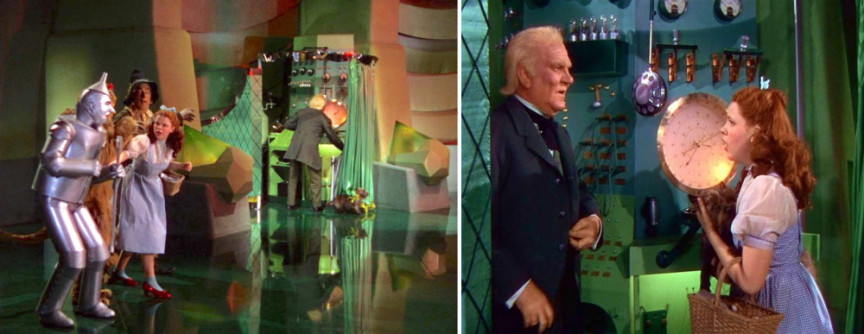
A number of details about this Ozian reveal and its depiction are of interest. The first and most obvious being its inverted similarity to the allegory and real object that was the Automaton Chess Player, the “Mechanical Turk”, a famed mechanical illusion involving a disappointingly human chess master hiding inside an elaborate, almost supernatural machine. Media history is littered with dispiriting stories of people and their machines, as explanations for and a denaturing of magic.
It is also notable in The Wizard that the reveal is in fact initiated by Dorothy’s dog, Toto. The story’s more-human protagonists – Dorothy, The Scarecrow, The Tin Man, The Cowardly Lion – do not arrive at the Castle sceptical of Oz’s magic. They instead believe in the face value of the illusory, projected figure of the Wizard, and they do not want or try to uncloak these magical mediations intentionally. Jumping from her arms, it is the nonhuman character in the scene that performs the physical action of “pulling back the curtain” to reveal Oz and his contraptions. The naive, unwitting curiosity of their canine compatriot, Toto, forces the anthropoids to face the unveiled Oz, a disappointing reveal.
The most pathos-inducing moment comes when Dorothy, saddened that she and her friends are not going to get what they were promised (and perhaps embarrassed at her own gullibility), tells the Wizard of Oz, “I think you are a very bad man”, and Oz replies: “Oh, no, my dear. I’m really a very good man… but I’m a very bad Wizard, I must admit” (Wizard of Oz, 1939).
To speak with artists, media makers, and thinkers – those who occasionally make attempts at wizardly artifice through media making – we might find it hard not to feel a bit bad for the ‘ol Wizard. He seems, amongst other things, to be suffering quite seriously from both intimacy issues and the overreaching expectations of patriarchy to be more than he is, to overstretch his extension of man. Like Dorothy, we know that in reality we can never really go anywhere – we are at home the whole time, dreaming up the adventures of Oz as detachments, distance, escapes, and then inevitable reveals. Revealing manoeuvres, as such, require that we first produce veils, abstractions – produce distance and allow alienation – and then surprise ourselves at what we have created, just like Dorothy.
Latour’s reveal
The atopic position of the detached outsider, like science itself, is classically bourgeois. As such it can be a rather difficult position to occupy by those who must remain attached to the situations and contexts they attempt to research or study. It is also difficult for those who study and investigate to be continually excluded and separated from those who live inside these worlds. This is related to something we might call, in true personal respect and intellectual friendship to the scholar and man, “Latour’s Reveal”.
Always concerned with the state and import of both media and critique itself, Bruno Latour has diagnosed how constructivist analyses of situations can denature, or even offend, those concerned with and constitutive of a context under study. Very often within conflicted Western modernity depiction and description become forms of denigration and diminution. This is, mind you, perhaps a trajectory of grammatological violence (i.e. of naming or re-presenting) that has been apparent and diagnosed since time immemorial.
Latour himself can likewise hardly be personally blamed for his own stoking of the fires of constructivist, critical deconstruction (e.g. during the “Science Wars” of the 1980s). Whereas constructivist reveals – as descriptions of practices from the outside – may be intended to offer researchers, scientists, and other fact – and difference – makers perspectives which make possible increased trust in the institutions they interrogate, they have in numerous cases had opposing effects. In the recent New York Times Magazine profile of Latour, Eva Kofman writes of his later self-reflexivity:
Latour writes how the alternative versions [of how objectivity is produced] by ‘my colleagues and I have proposed in order to account for the fabrication of objectivity have been hotly contested by some of the very researchers whose values we were trying to make comprehensible, at last, to others. The very words ‘network’ and ‘fabrication’ are sometimes enough to shock our interlocutors, which only shows how badly we have gone about it. What poor diplomats we have been!’ (Kofman 2018, n.p.)
It seems that many of us are becoming more aware of the ways in which our critiques have started as, or developed into, too-blunt instruments for reveal. The massively influential work and tools Latour and his colleagues derived from deconstruction, even as “geoconstructivism” (Neyrat 2018), for the analysis of the practices and interactions of humans and nonhumans on earth, wound up leaving a lot of people feeling rather picked apart and uprooted from this very same earth. It indeed helped to precipitate a world in which institutional trust and epistemic attachment and allegiance – the “common world” that Latour would hope us to seek – has become difficult to imagine.
Instead, divisiveness, filter-bubbles, feedback loops, and echo-chambers keep us from agreeing on – or being motivated by – practically anything whatsoever. Latour notes how the “work of redescription” could better be deployed in ways that give more space and time to other values that are very commonly encountered, but that do not necessarily find a comfortable slot for themselves within the frameworks offered by Western modernity (2013). For Latour, this comfortable slot calls not for “critical distance” but “critical proximities” – an acknowledgement that intimacy and desire, myth and story, co-compose and weave together the spaces of real, situated material existence (Latour 2013, p. 4).
If we are to learn from “Latour’s Reveal”, as Latour himself now seems to be calling for, we could ask in what ways can media and its arts collapse distances, come in from the outside, and instead enter into conversation with the attachments and affinities of those we would like to speak with and speak well of. Extracting particularities from the universal – instead of the other way around – is, after all, one thing that recorded and algorithmic media seem to be quite good at helping us do.
Media-historical reveals
If distance precipitates the possibility to denature, strip bare, and reveal, so historical time beats a similarly divisive path. We love to imagine moments of media-historical rift where the extra-experiential mediums of vision and sound have, we are told, ruptured and revealed a new zeitgeist, new epistemic epistemes. Media technologies in these historical narratives are often tools, or means of enlightening, opening new realms of knowledge to a naive suject supposé pas savoir, who is also remade in the process.
Muybridge and Stanford’s famed demystification of the horse gallop through photography brings about a media reveal that we understand dispels romanticism through extra-perceptual media-velocities. It also reduces that particular kind of awe and mystery, the natural magic and critical proximity that people must once have felt when gazing upon a horse in full gallop. As Rebecca Solnit writes in her superb psycho-drama River of Shadows on Muybridge and the first wild technological West of California:
The [real, objectivised] movements of horses dismayed artists and amused members of the public when Muybridge’s instantaneous photographs revealed them as much more complex and ungainly than the rocking-horse gallopers in paintings. (Solnit 2004)
Might I offer or detect further pathos, this time for the horse, similar to the sympathy we may have felt for Oz’s Wizard? Have they not both been mediatically forced to give up something of their motivating mysteries, their mythic and creative powers? Attempting to produce new realms of supposed “nonhuman objectivity” (whatever that might mean) technical media are often presumed to come on the scene in order to draw curtains back, pull rugs out, and destabilise entire continuities of attachments, practices, “naive” human behaviours – all of which, in other contexts, is what we appreciate about being(s) “human”.
Wolfgang Ernst also writes of this detachment as the “cold gaze” of media archaeology in a superb essay I refer to often called Let There Be Irony: Cultural History and Media Archaeology in Parallel Lines (2005). Ernst’s perspective on irony is one that is necessarily revelatory. That is, for him media technologies “actively render insights … which have otherwise been inaccessible to humans, whose temporal window of immediate perception of events is neurologically limited” (Ernst 2005, p. 597). Media become anti-narrative de-compositionist “technique[s] of remembering the past in a way that is radically alternative to historical discourse” (Ernst 2005, p. 49).
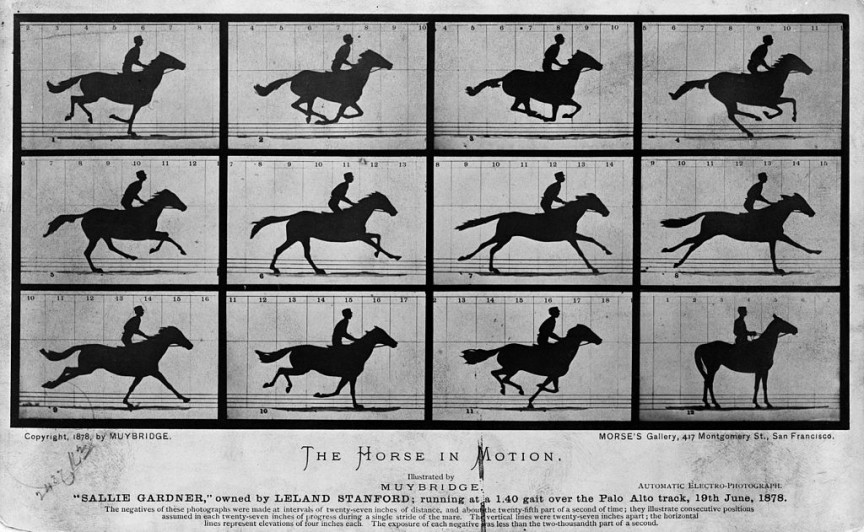
The aforementioned Objectivity by Daston and Galison opens with a further quintessential and fascinating tale of revealing medias (Daston & Galison 2007). It is a story of visual technologies aiding and abetting new epistemic eras and so-called virtues. British physicist Arthur Worthington, the “splash-man” as Daston and Gallison dub him, inaugurated part of the science of fluid dynamics in his depictions of the shape and formation of liquid drops as they landed on a plate, to his naked eye, under stroboscope.
His highly empirical personal fluid drawings and studies took place over a period of almost twenty years, from 1875 until when he was finally able to capture these splashes with a photograph in 1894. His eyeballed findings were that liquid drops could be visually modelled by symmetry and regularity, suggesting a generalised account. Worthington’s hand-drawings of these ‘tenth of a second’ moments no doubt gave him an intimacy between his experimental apparatus, the drops under study, and his own visual sense. But it was an intimacy that media technology would, with the 20/20 vision of hindsight, show to be just plain wrong.
Upon the introduction of strobe-photography, Worthington belatedly came to see his fallible, painstaking ocular efforts of twenty years to impose regularity as counting for much less than the hard-edged, mechanical record of the strobo-photograph. This media created a world of “real, as opposed to imaginary fluids”, said Worthington (cited in Daston & Galison 2007, p. 16). “The mind of the observer is filled with an ideal splash – an Auto-Splash – whose perfection may never be actually realized” (Daston & Galison 2007, p. 74). The shape of each droplet impact, it turns out, was not at all symmetrical but idiosyncratic and rather random in its non-patterning.
Worthington’s story is of interest as it evokes a number of lessons and prototypes of the media-reveal. We tell ourselves, as Worthington told himself, that one of the two methods of testing against the world, or representing reality, were in competition and therefore that one replaces the other – one must be discarded. We must choose between fallible human attachment and the in- or non-human mechanical objectivity of technical mediation. The latter ‘accesses’ reality’s full-blown complexity, its asymmetrical individuality. The construction of objectivity that Daston and Gallison help recompose, imposed by the quick-flicker of a media machine, helps to reproduce false divisions between practices of instrumentation and media and human motivation, intimacy, and desire.[2]
The cold gaze of media archaeology, similarly, has never seemed all that cold to me as there is always someone, somewhere, selecting or making technological media – for particular purposes, responding to particular contexts, psychologies, passions, loves. We record, sample, model, and parameterise this or that particular thing for this or that particular reason, in this or that particular way. Each and every such micro-temporal decision is driven, not by an imagined cold logic, but by the hot blood of human desire.
Worthington was, in the end, a very good man who also turned out to be a rather poor wizard and to whom I extend a good bit of sympathy. His story is an allegory of the discarding of critical proximity – throwing the baby of longitudinal, embodied material intimacy out with the bathwater of bias and projection. Could the history of these epistemologies have retained Worthington’s nearly two-decade devotion to a rather suppositious and subjective knowledge practice, while also admitting of its limitations and the heterodox multiplicities of perspective that new, technical media perspectives allow?
Jokes, tricks and contemporary media art
It is probable that those of us who have worked in, with, and through media for the past twenty or so years are rather caught up in metaphors of covering and uncovering, mediums and messages, imaginaries and reals. Media are, after all, tricks – redescriptions of one thing in terms of another, not what they appear to be. They are, in short, kind of a joke. In Ernst’s Let there be Irony essay, he also acknowledges this truly fundamental secret of technological media: “precisely that they usually hide their mechanisms in order to let the message appear in pure form” (Ernst 2005, p. 52).
Steeped in experiences and epistemes of media, could it be that we, the media-saturated, are predisposed to always attempt a reveal? Is this just part of a scenography of media artifactuality and technical fictionality in which we are trained and steeped? As people concerned with media-epistemologies, could it be that we are particularly susceptible to the satisfying irony of the reveal? Distance, and the reveal, uncover a set of very deeply rooted scenographies of modernism, dramaturgies of knowledge production and representation. Modernity itself may be constituted precisely by these contradictory scenographies, and so they are written into the design of most modern technologies.
Alex Galloway has written of this scenography of foregrounds and backgrounds as a distinction between ‘context’ and ‘medium’ in both art and technology in a great little essay he did on the net artists Jodi, called Jodi’s Infrastructure (2016).
Two basic activities emerge. A person may work “on” the digital or “within” it. In the former, one’s attention is directed from the outside in, taking the medium itself as its object, while in the latter one takes the perspective of the medium itself, radiating attention outward to other contexts and environments. To generalize from this, the first position (working “on”) is labelled modern or, when applied to art and aesthetics, modernist. And the latter position (working “within”) is labelled non-modern, be it premodern, postmodern, or some other alternative. (Galloway 2016, n.p.)
Galloway characterises Netart pioneers Jodi and their work – which reflects the componentry of internet communications themselves, its limitations, and affordances – as “Infrastructural modernism” (Galloway 2016, n.p.). Infrastructural modernism seems a fundamental category of media creativity, allied to the reveal and what Wójtowicz calls “Techno-Essentialism in Media Art” (Wójtowicz 2019). These are tendencies responsible for our continued, ironic fascination with things that provoke our sense of wry amusement about the techno-social absurdity in which we are all partaking. Reveals also allow us to laugh at the joke of veiled representation and teetering, vulnerable systematicity – media schadenfreude.
Everyday things like broken auto-teller interfaces or “blue screens of death” on public displays make us chuckle or smile precisely because of how they reveal disjunction between the image that we are ‘kidding ourselves’ with the rest of the time, and the obverse of systems, technical materiality, labour, and humanity that sustains and projects it.
Since the mid-2010s, both popular and academic discussions have adopted a way of writing and talking about “the Internet” through seemingly off-hand references about where it was “born”, where it “lives”. These seem indicative of our desire for a specific and singular, corporal, material locality, an essentialism of the reveal. Glitch Art also constantly delves into a play of medium specificity and ironic reveal, as Rosa Menkman’s work has pointed to (Menkman 2011). Rosemary Lee’s “Molten Media” project (Allen 2015; rosemary-lee.com/Molten-Media) simultaneously divulges the kind of dumb, plastic origins of electronic media culture, while also suggesting its futures – “the scattered vestiges of old things, of plants, animals, and artefacts wrapped in a new coat of stone”, a Gottfried Wilhelm Leibniz passage Lee points to in which he describes the composition of Earth itself (Lee 2015, n.p.).
Current work, like Evan Roth’s exemplary project Red Lines (2018; redlines.network) are revelatory gestures, recursively enacting the plays of distance that keep the systems that connect us at arm’s length. Roth’s piece attempts this through the slow, networked latency of a peer-to-peer broadcast and via visual proximity of real infrastructures of coastal sites around the world where the cables that make the internet possible emerge from the sea. How does the reveal operate in such projects, and how does their treatment of technical systematicity or media irony always partake of these strange, sardonic, paradoxes of modern media-technological life? Does a singular site of materiality feel too-easy, a stand-in for nuanced understandings and narratives of co-composed agencies and always-present lines of political and economic power? Is description always a diminution, or can the infrastructurally modernist tricks and jokes here become extrapolative, compositional, and opening?
Beyond the media reveal
I ask myself, most days these days, what might it be or mean to go beyond the modes of media critique I’ve here characterised “the reveal”? I of course have no quick or singular response to such a question. I have, however, started to make an unordered, incomplete list of places to look for responses. It would seem, for example, that our Nordic sister Björk might have a few ideas. In a characteristically wonderful, funny, and strange interview Björk did for television quite a few years ago (1988), she does a pretty superb and accurate, although surreal, job of explaining the basics of cathode ray tube operation:
But now I’m curious. I’ve switched the TV off and now I want to see how it operates. How it can make, put me into all those weird situations. So... It’s about time. This is what it looks like. Look at this. This looks like a city. Like a little model of a city. The houses, which are here, and streets. This is maybe an elevator to go up there. And here are all the wires. These wires, they really take care of all the electrons when they come through there. They take care that they are powerful enough to get all the way through to here. I read that in a Danish book…
I remember being very scared because an Icelandic poet told me that not like in cinemas, where the thing that throws the picture from it just sends light on the screen, but this is different. This is millions and millions of little screens that send light, some sort of electric light, I’m not really sure. But because there are so many of them, and in fact you are watching very many things when you are watching TV. Your head is very busy all the time to calculate and put it all together into one picture. And then because you’re so busy doing that, you don’t watch very carefully what the program you are watching is really about. So you become hypnotized. So all that’s on TV, it just goes directly into your brain and you stop judging if it’s right or not. (Locker 2013, n.p.).
Video from 1988 of Björk explaining how television works.
Two Media Art Histories conferences ago, in 2015 in Montreal, I was in a small discussion about “Archiving Failure” in which a smart fellow by the name of Mark Hayward was tracing the failed project of Canada’s first and only “Mechanology Centre” (Hayward 2015). It was an idea for a centre for the study of humanistic technological empathy, propelled in the early 1960s by a little-known techno-philosophy and computer science buff at the University of Western Ontario. Hayward located this historical project “somewhere between philosophy and logistics” – a mixture of the literary imaginaries of Gaston Bacherlard, the “critical poetry” of Jacques LeMoyne, and the techno-integrationism of Gibert Simondon and Jacques Lefitte. What results is a kind of “infrastructural reverie”, two words Mark put in a row that have stayed in my mind ever since.
In place of infrastructural modernism, this suggestion of a (Björkian?) “infrastructural reverie” seems a fruitful principle component that could be added to much of the work we do to unmask, reveal, and denature technologies and media. That is, to imagine and re-compose, re-mythologise and reimagine – to dream up – what new meanings and configurations might be possible. Not to leave Humpty Dumpty in pieces on the floor, but to pick up these pieces and put them back together in other, narrative, mythical, suggestive, and possible ways.
What might we make of this idea of an infrastructural reverie as a means of ensuring that equilibrated focus is put on both the practices of people and the systematic determinism that they may be caught up in? What could it mean to revisit attachments that people have to technological realities in their lives, in this moment of rather conservative technological concretisation and lock-in? Not to treat these attachments with cynicism and irony, but with respect, deliberateness, or even admiration. How do we account for the necessary relationships between stewardship and/or care, critique and knowledge, privilege, and investment in the critique and art of media? How might we – as “media people” – reinforce these relations and not just point at or to them? What would it be like to take up the responsibility of creating new imaginaries, in place of those that have been ironized, diminished, and denatured? What might lie beyond the media reveal?
[1] Thanks to my friend Donato Ricci at médialab Sciences Po for pointing me to this phrase and formulation (Latour 2013).
[2] For oblque histories and contemporary practices of flickering media art, see Allen & Jordan (2016) and Allen (2013).

